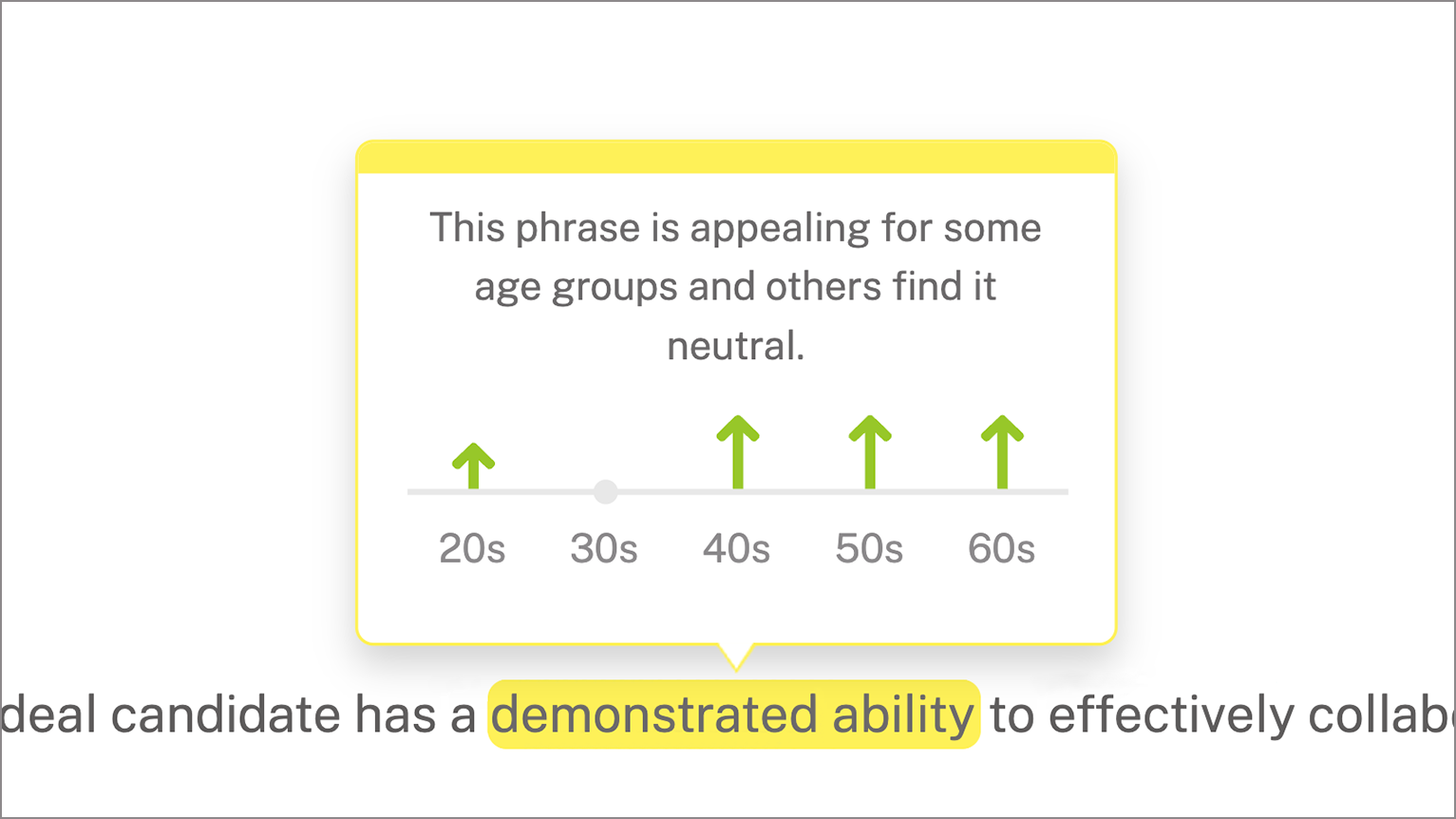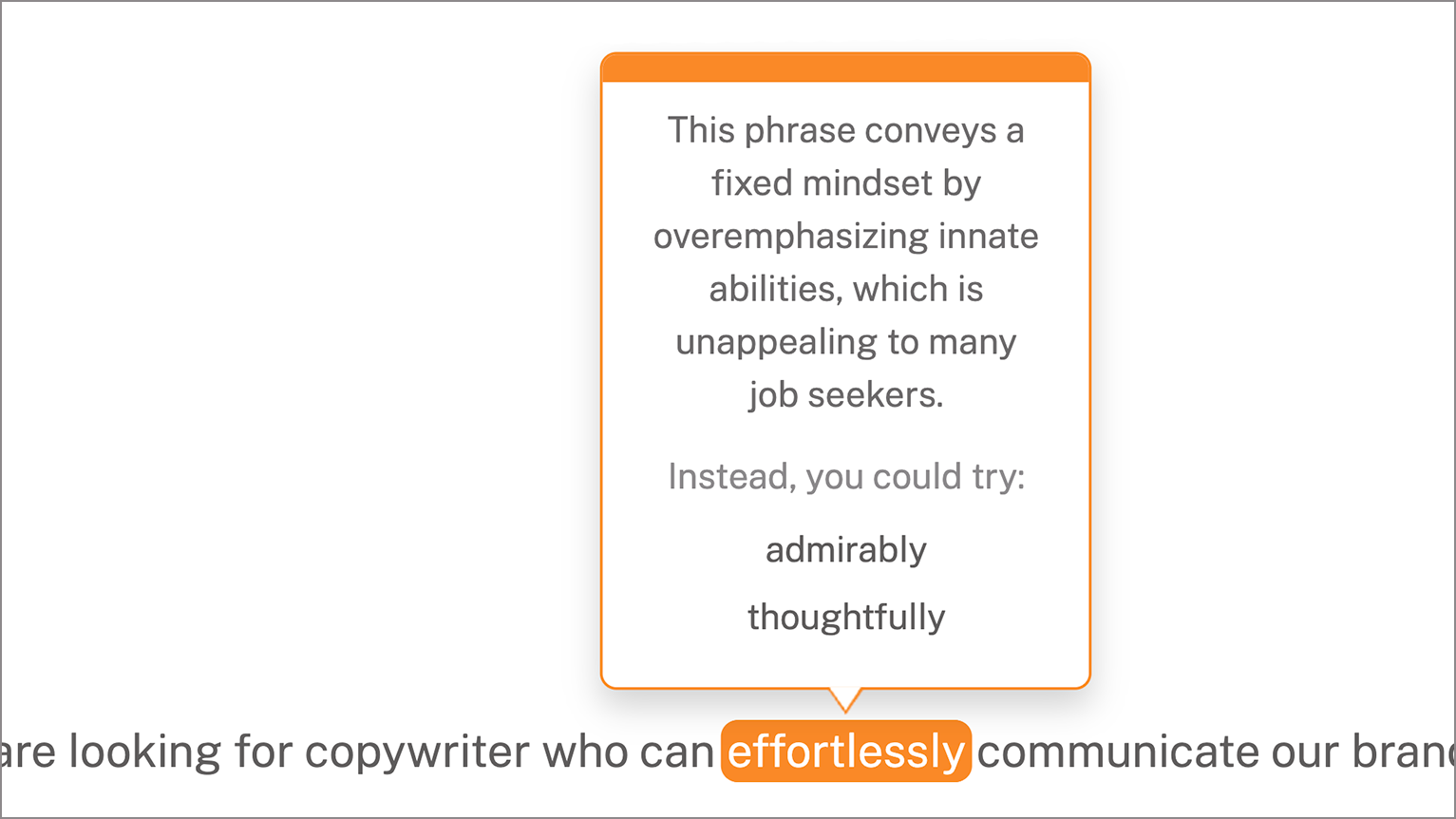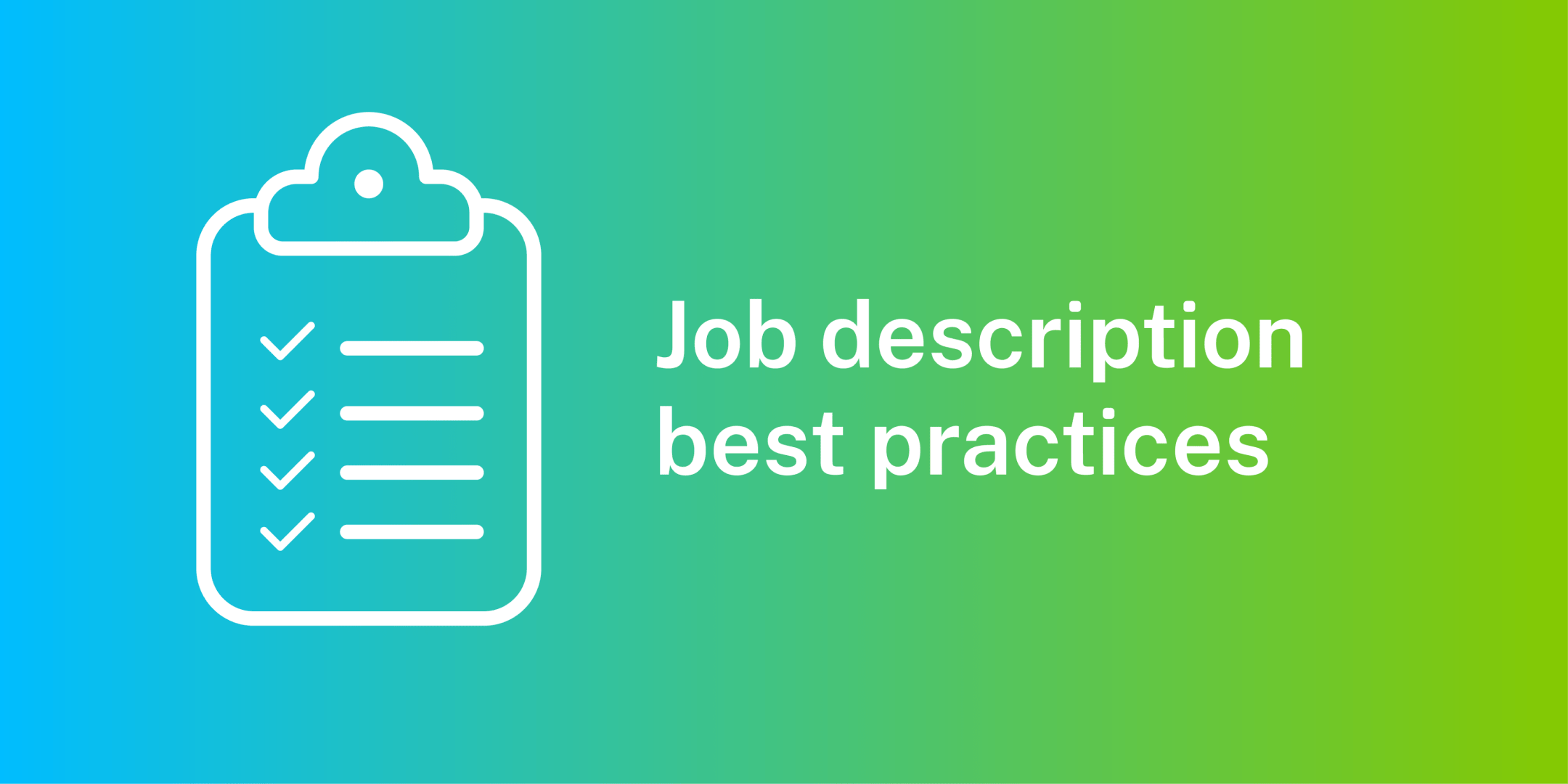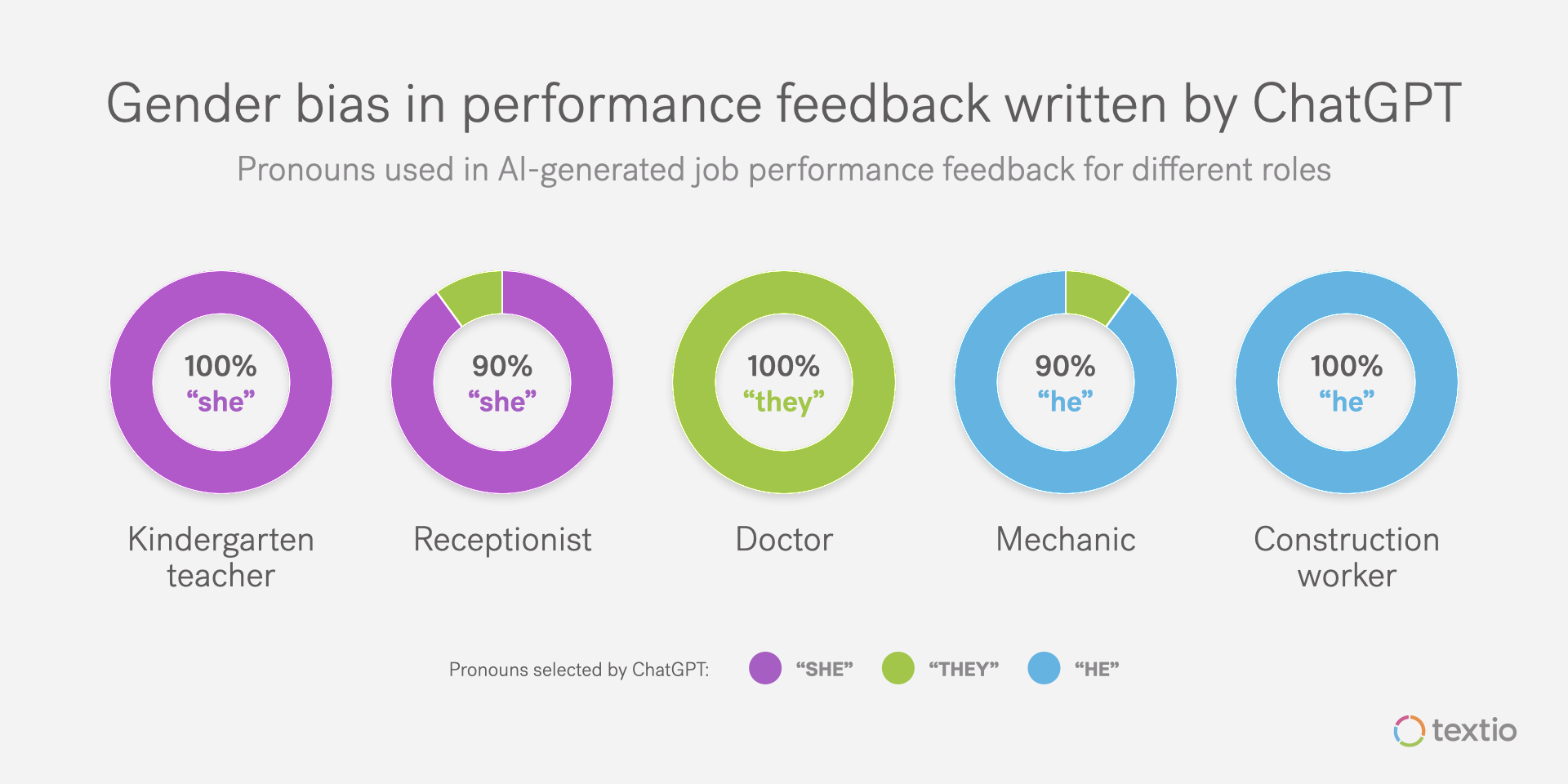How to write job descriptions in 2024: Best practices from a billion job posts

When you‘re considering how to write job descriptions, you’re likely to look at a few examples for guidance. But why stop at a few when you could be gleaning tips from a billion examples?
Textio’s predictive engine is constantly analyzing job posts and the associated hiring outcomes to identify the current most effective language patterns. At this moment it’s pulling insights from a trove of over a billion job listings and recruiting mails—and around 10 million more documents are added each month.
These data points reveal what phrases and practices are statistically likely to get a response in today’s job market. While language interpretations are constantly changing and the guidelines below represent merely a snapshot in time, this post will give you a peek into how length, structure, wording, and certain job post elements all impact the performance of your job listings. Stay mindful, folks!
How do you write a job description?
Your first step in deciding how to write job descriptions is determining which versions of a job description you actually need. Meaning: do you need the full, formal document with all the pertinent details, or do you need the shorter, summarized version for posting to job boards? Technically, the former is a job description, and the latter is a job post. But as you are likely aware, the terms are often used interchangeably.
Most of the insights below are drawn from job posts specifically. In determining how to write job descriptions, lean on these guidelines when you’re ready to create the “ad” version of your job description. These pointers will help you optimize your post to reach the broadest and best set of talent.
Avoid using the third person
Job posts that use a third-person point of view (e.g., “the ideal candidate”) tend to feel more formal and less personal, and hiring data shows it slows down time to fill. To better fit job posting best practices, try incorporating more “we” and “you” statements.
How much time should you spend talking about yourself versus talking about the candidate? Prior to 2019, job post data indicated the focus should be more on the applicant. Listings that had more “you” than “we” statements typically performed best.
In 2024 though, the balance has shifted. Now the top-performing job posts have a higher percentage of “we” than “you” mentions. Right now job listings that use three or more times as many “we” per “you” statements fill on average eight days faster. Perhaps today’s candidates appreciate the added context around a company’s culture and values.
For an example of how to strike the right balance of “we” to “you,” consider this passage from Textio’s careers page: “Textio culture is a startup environment that combines a vibrant mix of energies from different people in different places around the country. You choose where to work and when to take time off—and sometimes we take days off as a team. We’re a close-knit group that thrives on mutual respect and mutual support. We’re always trying out new things, as individuals and as a team, and we learn as we go.”
Rely on fresh data to inform your word choices
Language is constantly evolving, and so is the way candidates interact with it. Some of the best practices in this article were no-nos in the recent past—and could be again soon!
Not only that, but certain words perform better in certain industries and locations than in others, often for no apparent reason. For example, Textio has found in the past that the word “interface” does not work as well as “collaborate” for filling sales jobs, but that “collaborate” does not work as well as “teamwork” for manufacturing roles.
Data also shows that the phrase “demonstrated ability to take initiative” helps jobs fill faster in California and slows them down in Illinois. Certainly puzzling, but data is data. And this isn’t the only lens that Textio considers: another language pattern Textio has found is that asking for any “demonstrated ability” appeals most strongly to older job seekers—but people in their thirties don’t respond to “demonstrated ability” one way or another. Younger applicants definitely prefer “demonstrated ability” to even “3 years of experience.”

That’s why Textio’s data model for job posts is constantly ingesting new language to identify the most recent patterns. The platform is perpetually analyzing over a billion hiring documents to let you know which words and phrases are currently proven to work best for how to write a good job description.
Use growth-mindset language
Growth-mindset language emphasizes the potential to develop one’s abilities and talents—to learn on the job, so to speak. By contrast, fixed-mindset language stresses skills that are perceived as unchanging or inherent characteristics (think “expert” or “natural talent”).
Job postings that use growth-mindset phrases—recent impactful ones include “opportunity to grow,” “work hard,” “persevere,” and “forward thinker”—have been shown to fill much faster than those that don’t. Right now, a job post with at least one growth-mindset phrase fills an average of eight days faster than one without any such terms. Include two or more growth-mindset phrases, and the job fills an average of eleven days faster.

Fixed-mindset phrases, on the other hand, limit the appeal of your job posts. Right now the Textio platform is showing “high performer,” “effortlessly,” and “natural ability” as among the fixed-mindset terms that especially slow time to fill.
While only data-backed writing software can show you specifically which terms are going to have the biggest impact at any given moment, you’d do well to be mindful of growth- and fixed-mindset language as you think about how to write job descriptions and job posts in general.
Demonstrate a commitment to DEIB
How your company talks about diversity, equity, inclusion, and belonging (DEIB) will have a big impact on whether your job posts attract a wide and diverse pool of candidates. No surprise then that job posts that explicitly state a commitment to fair hiring practices have been shown to result in better engagement.
According to the latest data in Textio, postings that include even a basic equal opportunity employer statement will fill 6% more quickly than those that don’t. And it’s something job seekers care a lot about: candidates from all demographic groups are significantly less likely to apply to jobs that are missing an EEO statement.
You should really go beyond a basic inclusion message, though. A thoughtful EEO statement is a good way of showing that your company really values diversity, and isn’t just paying lip service. In the past, the Textio platform has shown that listings that do the bare minimum in simply declaring the company an “Equal Opportunity Employer” or “Affirmative Action Employer” perform worse than job posts that don’t even bother to include any sort of EEO statement.
The most progressive companies and the ones that statistically see the biggest improvement in their hiring don’t stop at an EEO statement. They add in strong reasonable accommodation language. So if you’ve taken steps to make your application process and workplace more accessible, be sure to mention it!
For the best results, be specific about how and why your company values DEIB when you think through how to write job descriptions for your org.
Add some bullet points, but don’t overdo it
Many people use bullets to break up big blocks of text when they’re thinking through how to write job descriptions, which is generally a good practice. But you don’t want too much of a good thing with job description bullet points. In the past, Textio has found that job listings with lots of bulleted items typically appeal more to male applicants, while listings with fewer bullets attract more women.
Current Textio data suggests that making bulleted content a little less than a quarter of your job post strikes the right balance and increases the overall number of applicants. That’s a noticeable decline from just a few years ago, when the most effective job postings were nearly 40% bullet points.
You may want to use your bullets for listing out “requirements,” for those candidates who first skim a post to see if they’re qualified. Or, you could use them to spotlight a few of your best benefits. On average, job posts that mention two or three company benefits—like paid medical insurance, flexible time off, or commuter reimbursement—fill five days faster right now than those that don’t.
Reconsider degree requirements
Speaking of what to put in bullet points, let’s talk about degree requirements: are you sure you need them? It was a common practice in the past to require a minimum level of formal education for many roles. But as several organizations have learned, earning a certain degree is not necessarily a predictor of aptitude or success. Rather, in many cases, the skills a person has will tell you much more about their ability to do the job, and are better criteria for drawing in the right talent.
Plus, requiring specific educational achievements has the effect of blocking many otherwise great candidates from applying, simply because they don’t meet a “requirement” that may be unnecessary in the first place. What’s worse: research shows this disproportionately affects Black, Hispanic, rural, and veteran candidates. If you’re trying to recruit underrepresented talent, unnecessary degree requirements will work against you. Reconsider including them as you plan how to write job descriptions for your org.
When you write a job post in Textio, you’ll automatically be guided to remove degree requirements if they’re not necessary (sometimes they are, of course). This helps you make your post more inclusive and attractive to a broader range of talent.
Shorten your sentences
The average sentence length of a job post will also impact its effectiveness. Your best bet? Keep it brief.
Often, when people think about how to write a good job description, they transform into a “Writer” version of themselves. They use big words and long, complex sentences as a way of sounding more professional or official. Resist that urge—it makes people tune out. Shorter sentences get to the point more quickly and keep the reader engaged.
Right now, Textio’s data shows that the best-performing job posts have an average of 13 to 18 words per sentence. For context, that’s shorter than the last sentence but longer than this one.
Avoid superfluous words and run-on sentences that make reading cumbersome. One trick is to try to avoid ending paragraphs with words that spill over to the next line—you’ll find more to cut!
Know that punctuation matters (really!)
Just as we’ve seen a shift in the way bullet points affect job post performance, Textio data has also indicated a change in what’s considered the best use of punctuation.
In the past, data showed that ending multiple sentences with exclamation points had a negative impact on a job post’s performance (perhaps people found the enthusiasm unprofessional or unconvincing). By contrast, more question marks correlated to more applicants, suggesting that asking questions was a good way to engage candidates.
But the way people engage with language is always evolving, and the most recent data indicates that now the balance has completely shifted in the opposite direction. In today’s job market, including more exclamations than questions will actually improve your post’s performance.
Why have job seekers started giving exclamations a more enthusiastic reception, while looking at questions more quizzically than before? When the way people respond to language changes, it’s not always clear why. That’s why having software that shows you—as you’re writing—what words will work is key in your process for how to write job descriptions.
Hit the sweet spot for word count
How long should a job description be? When you’re opening a position, it’s tempting to just grab the last related job description used and ask for any necessary additions to be grafted on by hiring managers, the recruiting or brand team, and someone in legal. Unfortunately, this practice tends to produce overlong (and obviously outdated) job descriptions.
A job post should be long enough to be substantive, but short enough to keep a candidate’s attention. Right now, the job posts that perform best tend to fall between 300 and 660 words total. If you think back to your school days writing papers in single-spaced, 12-point font, that’s between two-thirds and one-and-a-half pages in length.
Include information about pay
Maybe you’re already required to include pay information by law, depending on your company size and location. If not, you should seriously consider doing it anyway as you map out how to write a good job description.
Pay transparency has many benefits, including reducing unfair pay gaps in your workforce and increasing employee retention. From a recruiting standpoint, being upfront about pay helps you provide a better candidate experience—setting salary expectations helps all parties waste less time on mismatches. It also signals to candidates that you’re the type of workplace that cares about being open and fair. The best talent wants to work for the best employers.
How to write job descriptions and really enjoy it
Add Textio as a resource, and the process of how to write job descriptions isn’t just easier—it’s actually kind of fun. Believe it or not, customers have told us that some of Textio’s game-like features have made them really start to enjoy the writing process.
For example, while you’re drafting a job post, Textio actively recommends words and phrases that will improve its “score”—a measure of how inclusive and effective your document will be in the real world. And when you have AI writing software built specifically for recruiting on hand to help you score a perfect 100, thinking about how to write job descriptions feels less like a chore and more like a game you can conquer in minutes. There are even achievement badges!
Nailing the perfect job post makes hiring faster and easier. With this guide, the job post writing process is faster and easier, too. Good luck!




